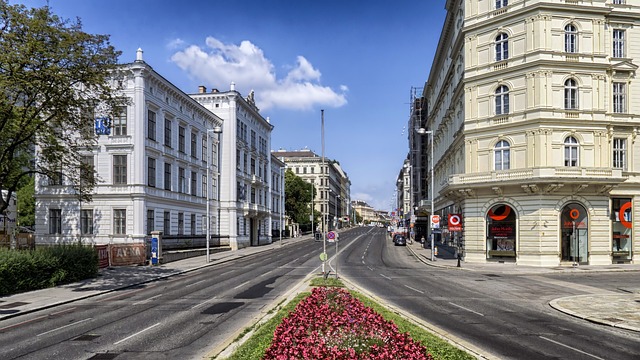Austria is renowned for its efficient, reliable, and eco-friendly public transport system. Whether you’re a resident or a visitor, navigating the country using its extensive network of trains, trams, buses, and subways is a breeze. Austria’s commitment to sustainability and innovation has made its public transport system one of the best in Europe. This article explores the key features of Austria’s public transport system, its benefits, and tips for making the most of it.
Overview of Austria’s Public Transport System
Austria’s public transport system is a well-integrated network that connects cities, towns, and rural areas. The system is operated by a combination of federal, regional, and private companies, ensuring comprehensive coverage and high service standards. Here are the main components of Austria’s public transport system:
1. Trains
- ÖBB (Austrian Federal Railways): The national railway operator, ÖBB, provides an extensive network of trains, including high-speed Railjet services, regional trains, and night trains.
- City Trains (S-Bahn): In major cities like Vienna, Graz, and Salzburg, S-Bahn services connect the city center with suburban areas.
- International Connections: Austria’s central location in Europe makes it a hub for international train travel, with connections to neighboring countries like Germany, Switzerland, Italy, and Hungary.
2. Trams and Light Rail
- Trams are a common sight in Austrian cities, offering a convenient and eco-friendly way to get around. Vienna, for example, has one of the largest tram networks in the world.
- Light rail systems, such as the U-Bahn (subway) in Vienna, provide fast and efficient transportation within urban areas.
3. Buses
- Regional and city buses complement the train and tram networks, ensuring that even remote areas are accessible.
- Postbuses, operated by ÖBB, are particularly useful for reaching rural and mountainous regions.
4. Cycling and Walking
- Austria promotes cycling and walking as sustainable modes of transport. Cities like Vienna and Graz have extensive bike lanes and pedestrian zones, making it easy to get around without a car.
Benefits of Austria’s Public Transport System
1. Efficiency and Reliability
- Austria’s public transport system is known for its punctuality and frequency. Trains and buses run on time, and services are frequent, even in rural areas.
2. Eco-Friendliness
- Austria is committed to reducing its carbon footprint, and its public transport system plays a key role in this effort. Many trains and trams are powered by renewable energy, and the country is investing in electric buses and other green technologies.
3. Cost-Effectiveness
- Public transport in Austria is affordable, especially when compared to the cost of owning and maintaining a car. Various discount cards and passes are available to make travel even more economical.
4. Comprehensive Coverage
- Whether you’re in a bustling city or a remote village, Austria’s public transport system ensures that you can get where you need to go. The integration of different modes of transport makes it easy to switch from trains to buses to trams seamlessly.
5. Accessibility
- Austria’s public transport system is designed to be accessible to everyone, including people with disabilities. Low-floor trams and buses, elevators in subway stations, and audible announcements make it easy for all passengers to use the system.
Tips for Using Public Transport in Austria
1. Get a Travel Card
- Consider purchasing a travel card or pass for unlimited travel within a specific period. The Vienna City Card, for example, offers unlimited travel on public transport and discounts to museums and attractions.
2. Plan Your Journey
- Use online journey planners or mobile apps to check schedules and plan your route. The ÖBB Scotty app is particularly useful for train travel.
3. Validate Your Ticket
- Always remember to validate your ticket before boarding trains or trams. Failure to do so can result in a fine.
4. Be Punctual
- Austrian public transport is known for its punctuality, so make sure to arrive at the station or stop on time.
5. Respect Local Etiquette
- Austrians value politeness and order. Keep noise to a minimum, offer your seat to elderly or disabled passengers, and follow the rules and regulations.
Sustainability Initiatives
Austria is a leader in sustainable transport, with several initiatives aimed at reducing environmental impact:
- Renewable Energy: Many trains and trams are powered by electricity generated from renewable sources like hydro, wind, and solar power.
- Electric Buses: Cities like Vienna and Salzburg are introducing electric buses to reduce emissions and improve air quality.
- Bike-Sharing Programs: Bike-sharing schemes, such as Citybike Wien, encourage residents and visitors to use bicycles for short trips.
- Green Infrastructure: Austria is investing in green infrastructure, including bike lanes, pedestrian zones, and eco-friendly public transport hubs.
Popular Public Transport Routes
1. Vienna U-Bahn
- Vienna’s subway system is one of the most efficient in Europe, with five lines covering the entire city. It’s the fastest way to get around Vienna.
2. Salzburg S-Bahn
- Salzburg’s S-Bahn network connects the city center with surrounding towns and villages, making it easy to explore the region.
3. Innsbruck Tram
- Innsbruck’s tram system is a convenient way to navigate the city and reach popular tourist attractions like the Golden Roof and the Nordkette mountain range.
4. Graz Tram and Bus Network
- Graz has an extensive tram and bus network that covers the entire city, including the historic old town and modern districts.

اترك تعليقاً